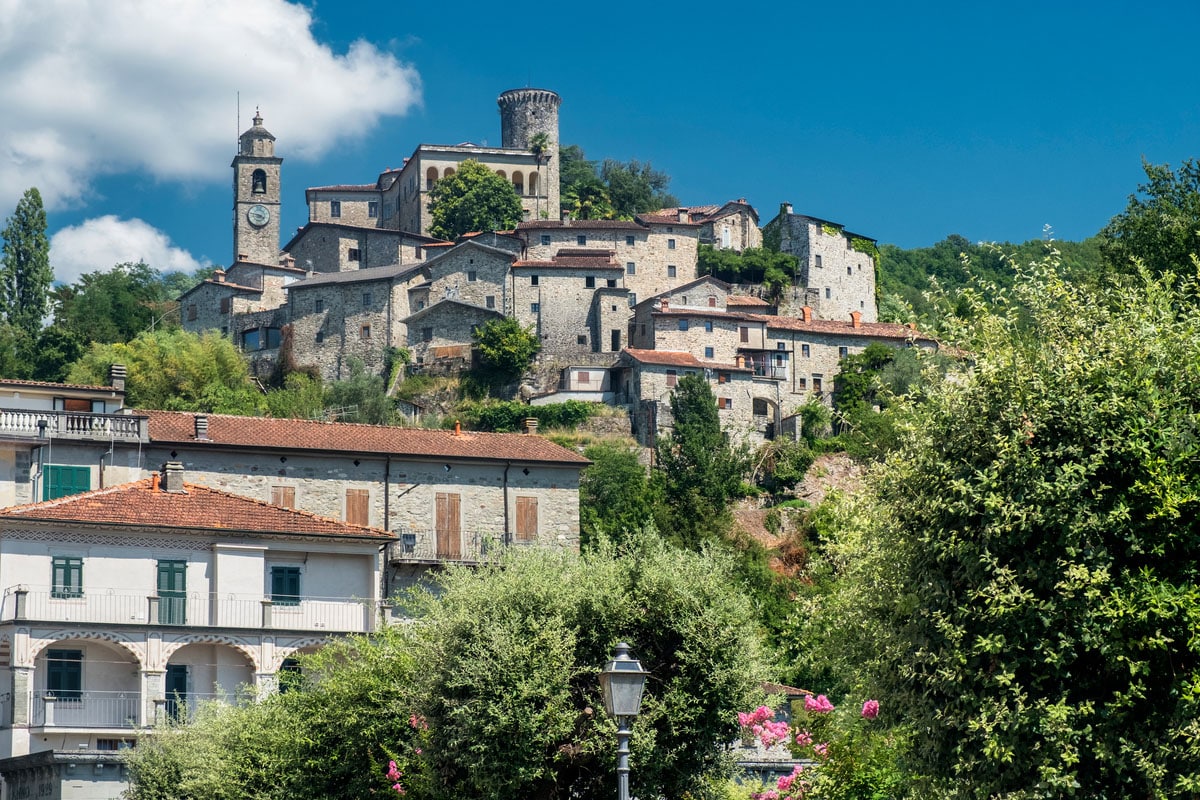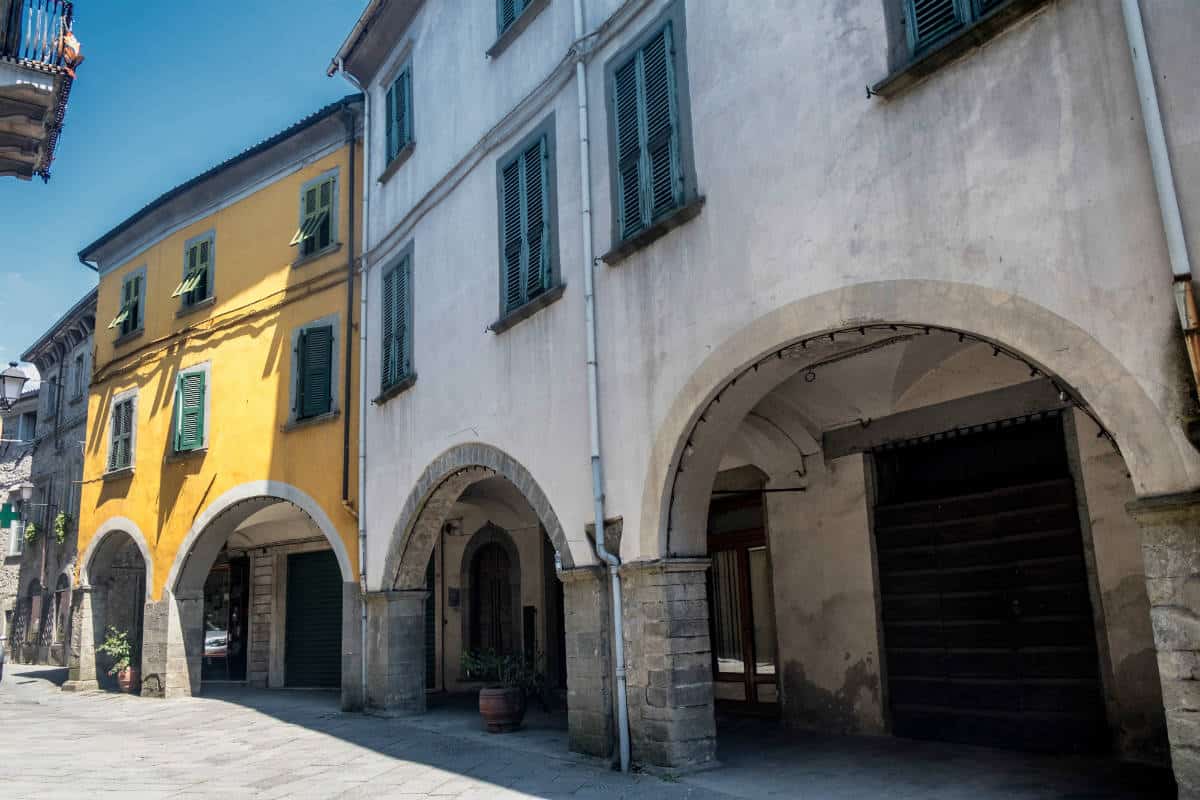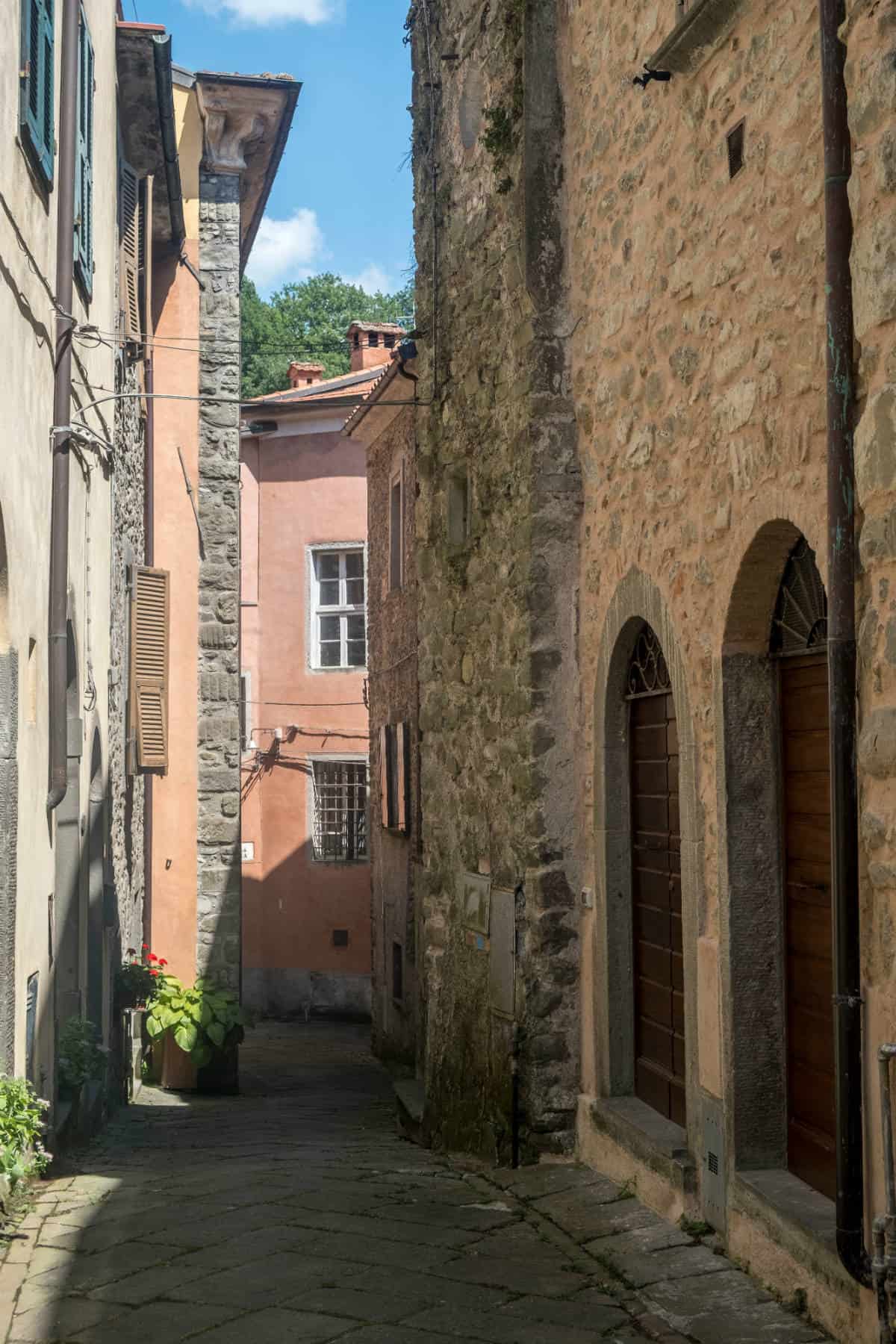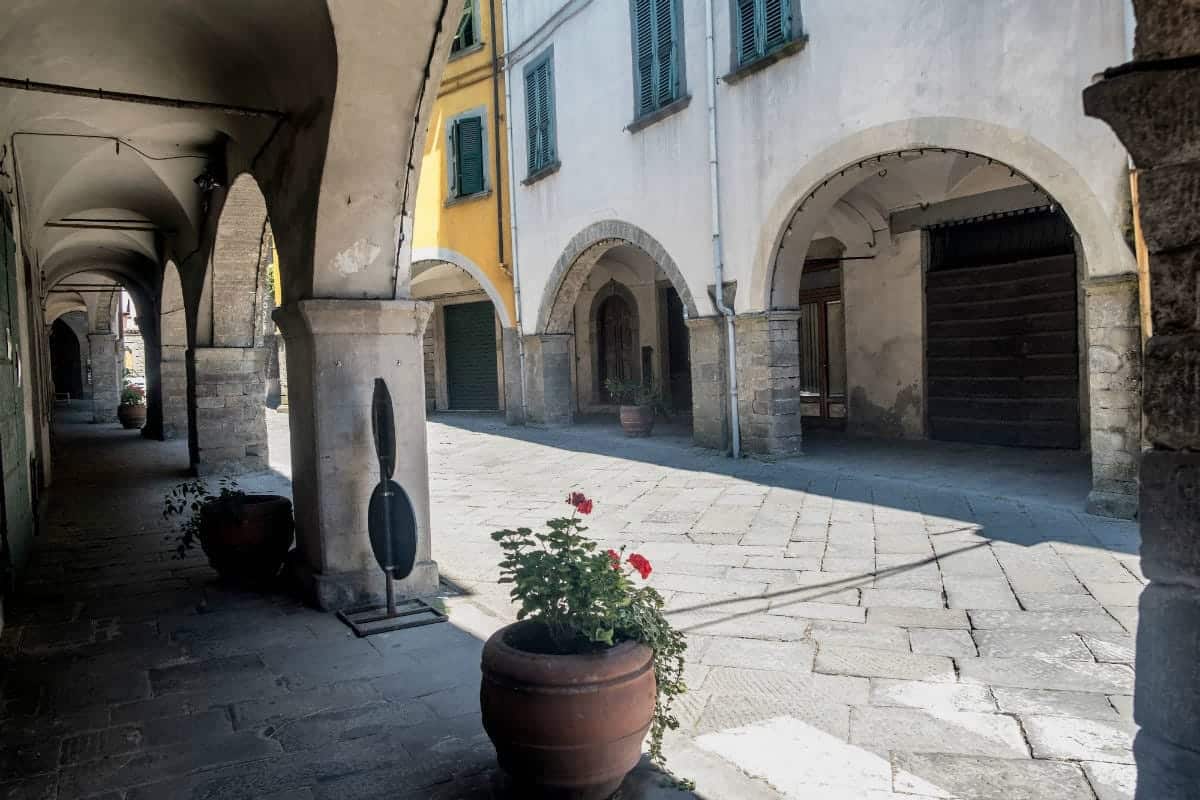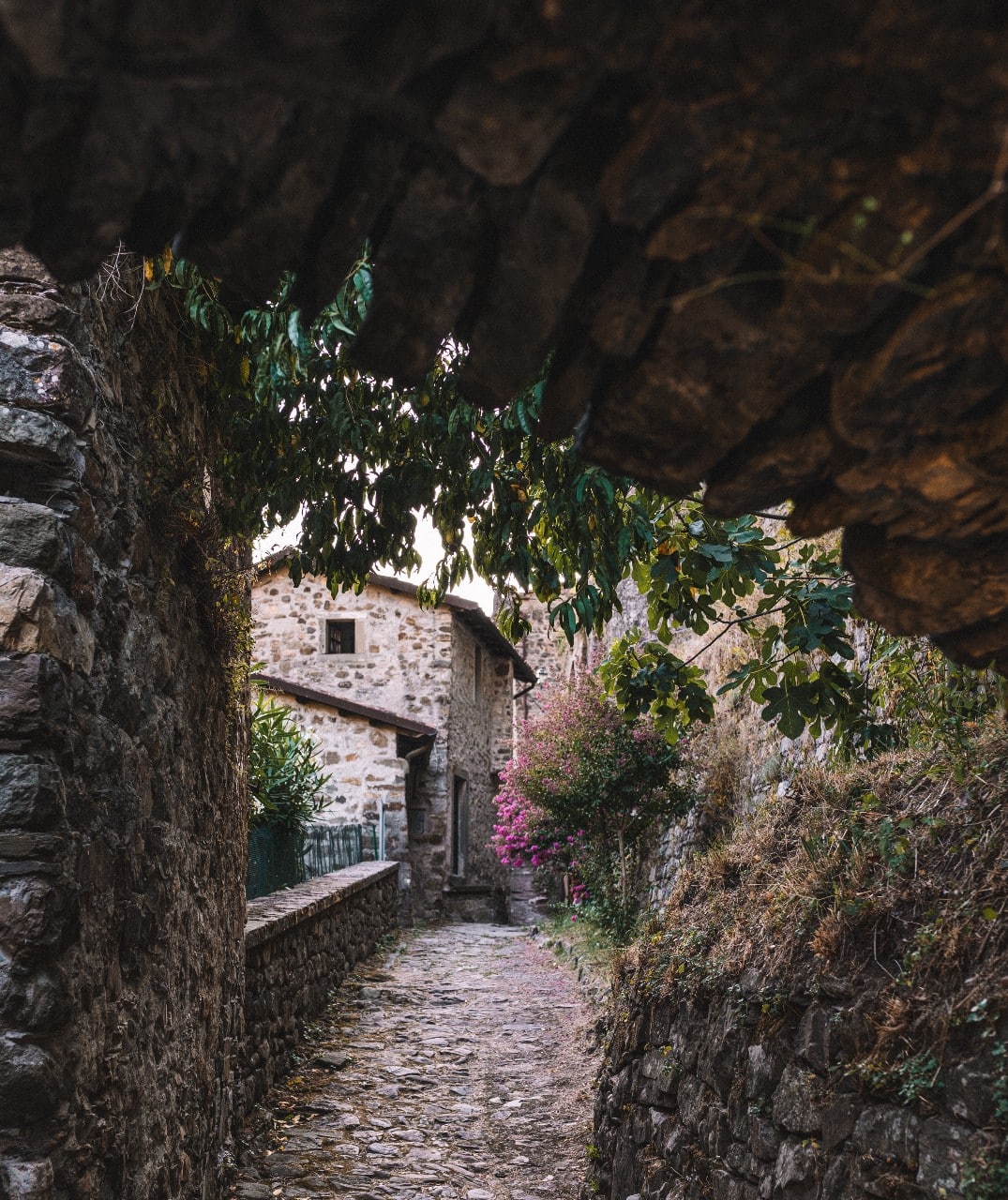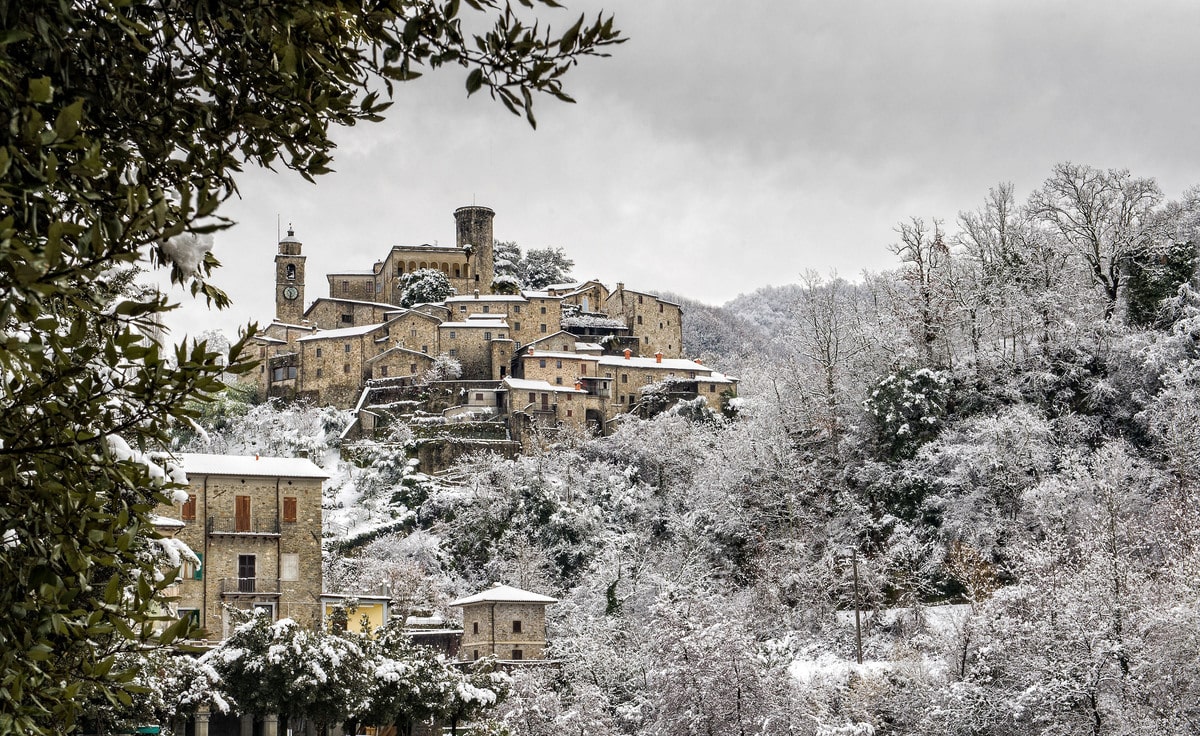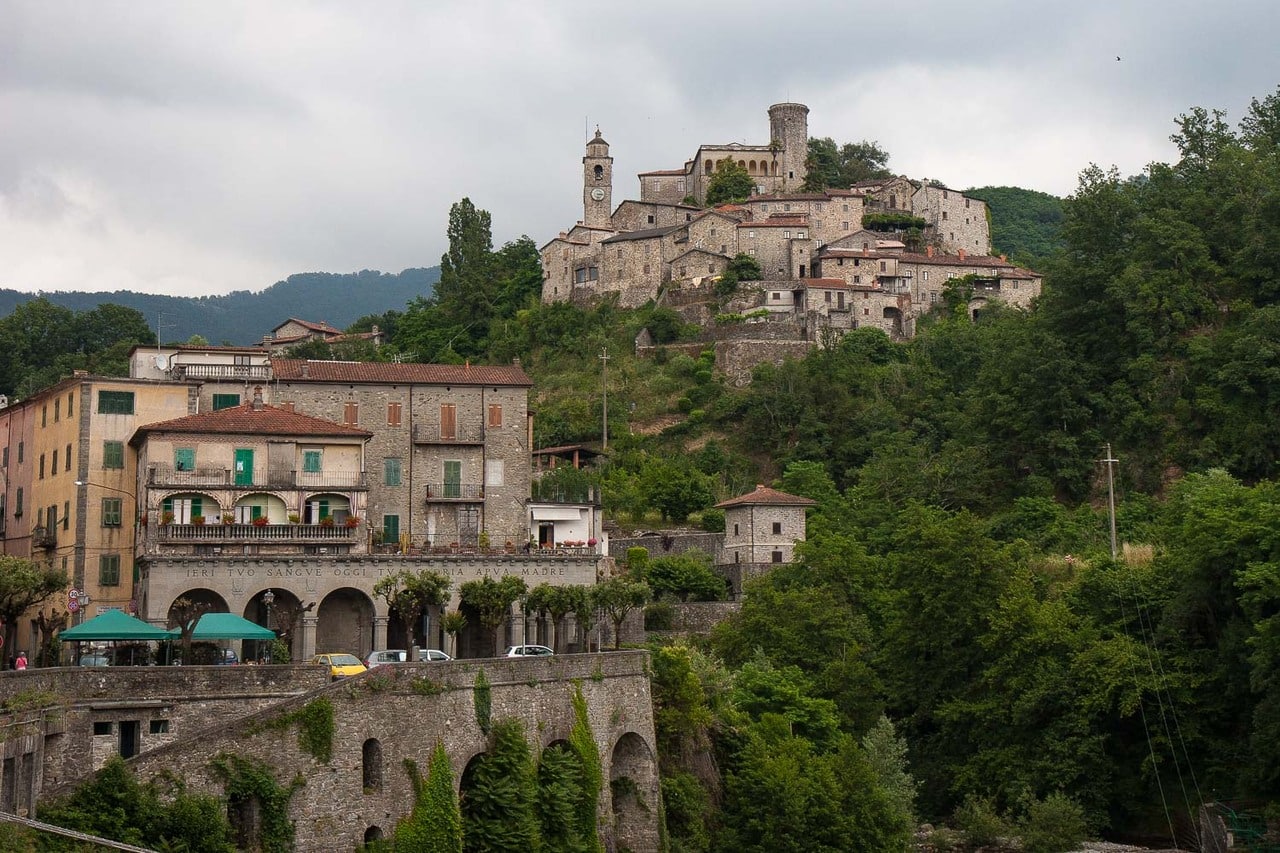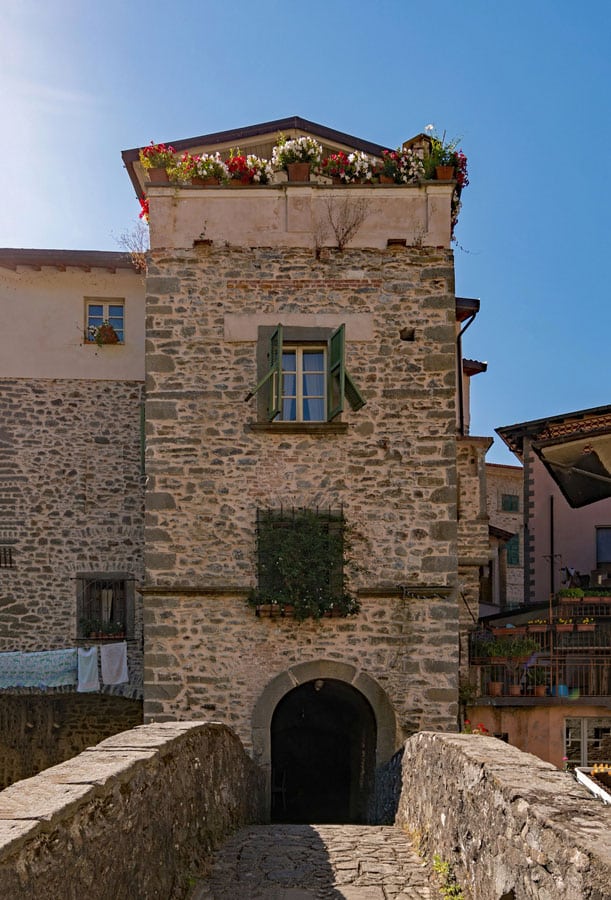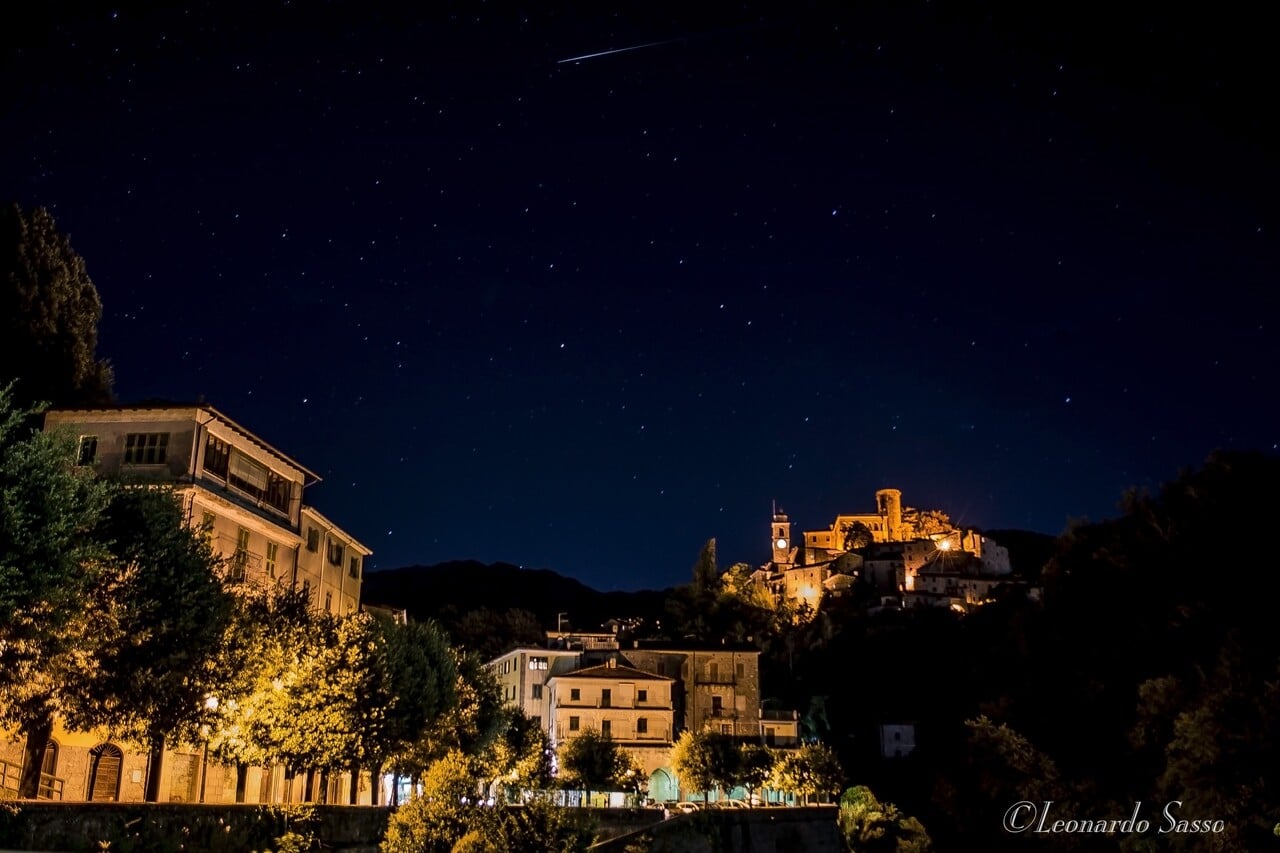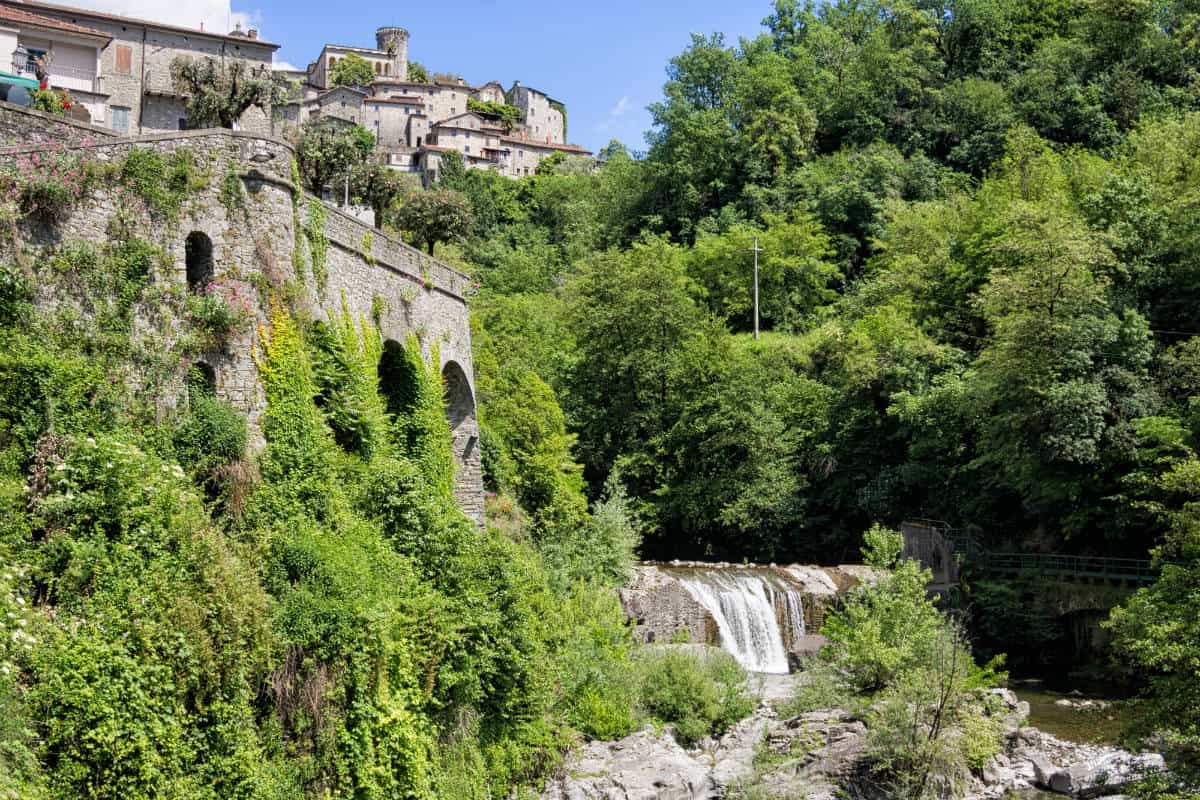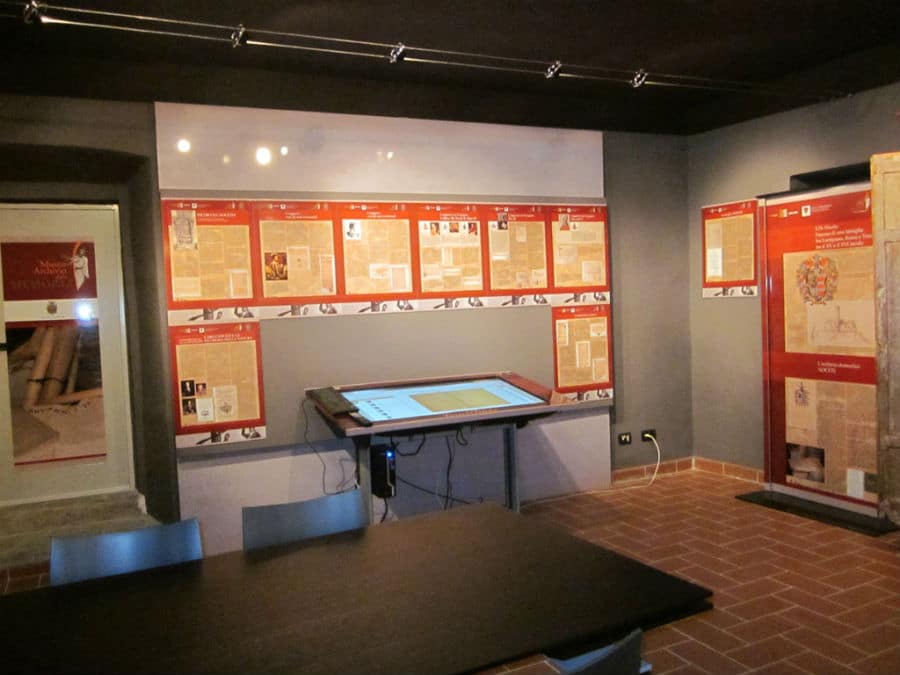The village of Bagnone, located in Lunigiana, is a place where history, culture and nature come together in a perfect balance. This charming municipality, which is part of the Tuscan-Emilian Apennines National Park and Unesco MAB Reserve, is crossed by the stream of the same name and has two distinct settlements: the medieval one perched on the left of the stream and the market town, known as Gutula, on the right.
The historic center of Bagnone is a labyrinth of narrow alleys and arcades, which hold buildings of great architectural and cultural interest. Among the highlights are Villa Quartieri, the parish church of San Niccolò, and the Quartieri Theater. These places not only tell the story of the town, but also bear witness to ancient traditions and devotion. The medieval bridge, Pontevecchio, is another symbol of the village, as it connects the castle to the walled part of the village through the gate of Santa Caterina, making the atmosphere even more evocative.
Bagnone's history is deeply rooted in its geography. The castle, located in a dominant position, dates back to the period of the Malaspina, a noble family that played a crucial role in the history of Lunigiana. Built in 1351, the castle features an imposing cylindrical stone keep, the only surviving element of a structure that was once much larger. It is currently a private residence, but its walls tell centuries of stories and legends.
The Bagnone area is a paradise for nature lovers, with breathtaking landscapes and enviable biodiversity. The Bagnone Valley, with its streams, waterfalls and trails, offers unique opportunities for hiking and outdoor activities. Numbered trails (116, 118 and 120) connect the mountain hamlets of the municipality and lead to enchanting places where the beauty of nature meets history. Visitors can take a dip in the crystal-clear waters of the Bagnone streams and its tributaries, such as "L'Anguillara" and "I Mulini di Marzo," to cool off on hot summer days.
There is no shortage of historical evidence in the area, such as the Museum Archive of Memory, which delves into the cultural and natural history of the municipality through stories, documents and images of rural Lunigiana life. The museum is divided into two sections: one dedicated to the 20th century and the other to the historical archive, located in the Palazzo della Cultura.
Bagnone's gastronomic tradition is equally fascinating. It is home to the famous Treschietto Onion, a high-quality local product, but the Lunigiana menu also offers other delicacies such as Testaroli, Torta d'erbi, and Tortelli alla bagnonese. Local cuisine is a journey into flavors and culinary traditions, often linked to agricultural cycles and local holidays.
In addition to its cultural and historical richness, the village of Bagnone has a long tradition of hospitality, with farmhouses and bed & breakfasts offering a warm welcome to visitors. Local events, such as festivals and traditional celebrations, allow visitors to immerse themselves in village life and appreciate the customs of its inhabitants.
For those who love adventure, Bagnone is the gateway to numerous hiking and mountain biking trails, which wind through enchanting landscapes and spectacular views. The area is perfect for exploration, with routes leading to historic sites, such as the Castle of Castiglione del Terziere and the Castle of Treschietto, both testaments to the strategic importance of the area.


